-
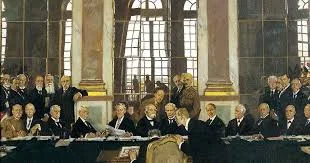 the main peace treaty that ended World War I, signed by Germany and the Allied powers on June 28, 1919
the main peace treaty that ended World War I, signed by Germany and the Allied powers on June 28, 1919 -
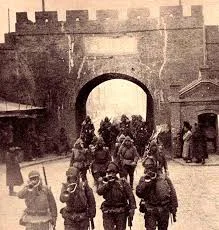 The Empire of Japan's Kwantung Army invaded the Manchuria region of the Republic of China on 18 September 1931, immediately following the Mukden incident
The Empire of Japan's Kwantung Army invaded the Manchuria region of the Republic of China on 18 September 1931, immediately following the Mukden incident -
 The Holocaust known in Hebrew as the Shoah was the genocide of European Jews during World War II. From 1941 to 1945, Nazi Germany and its collaborators
The Holocaust known in Hebrew as the Shoah was the genocide of European Jews during World War II. From 1941 to 1945, Nazi Germany and its collaborators -
 Italy invaded Ethiopia in October 1935, a war that led to the Italian occupation in 1936 and was a precursor to World War II. The invasion was driven by Fascist leader Benito Mussolini's
Italy invaded Ethiopia in October 1935, a war that led to the Italian occupation in 1936 and was a precursor to World War II. The invasion was driven by Fascist leader Benito Mussolini's -
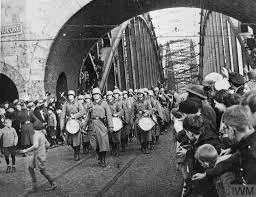 The remilitarisation of the Rhineland began on 7 March 1936, when military forces of Nazi Germany entered the Rhineland, which directly contravened
The remilitarisation of the Rhineland began on 7 March 1936, when military forces of Nazi Germany entered the Rhineland, which directly contravened -
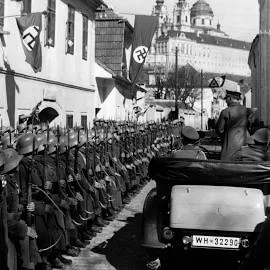 The idea of an Anschluss (a united Austria and Germany that would form a "Greater Germany") [b] arose after the 1871 unification of Germany.
The idea of an Anschluss (a united Austria and Germany that would form a "Greater Germany") [b] arose after the 1871 unification of Germany. -
 Between 1933 and 1941, the Nazis aimed to make Germany judenrein (cleansed of Jews) by making life so difficult for them that they would be forced to leave the country. By 1938, about 150,000 German Jews
Between 1933 and 1941, the Nazis aimed to make Germany judenrein (cleansed of Jews) by making life so difficult for them that they would be forced to leave the country. By 1938, about 150,000 German Jews -
 The Munich Agreement was reached in Munich on 30 September 1938, by Nazi Germany, the United Kingdom, France and Italy.
The Munich Agreement was reached in Munich on 30 September 1938, by Nazi Germany, the United Kingdom, France and Italy. -
 a 1939 U.S. bill that proposed admitting 20,000 German refugee children into the country outside of existing immigration quotas, but it failed to pass
a 1939 U.S. bill that proposed admitting 20,000 German refugee children into the country outside of existing immigration quotas, but it failed to pass -
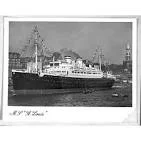 a German passenger liner famously known for its 1939 voyage where it was denied entry to Cuba and the United States, forcing its Jewish passengers to return to Europe
a German passenger liner famously known for its 1939 voyage where it was denied entry to Cuba and the United States, forcing its Jewish passengers to return to Europe -
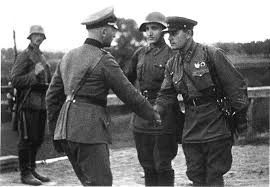 The Nazi-Soviet Pact, signed on August 23, 1939, directly led to the invasion of Poland by allowing Germany to attack without fearing Soviet intervention. A secret protocol in the pact divided Poland into German and Soviet spheres of influence.
The Nazi-Soviet Pact, signed on August 23, 1939, directly led to the invasion of Poland by allowing Germany to attack without fearing Soviet intervention. A secret protocol in the pact divided Poland into German and Soviet spheres of influence. -
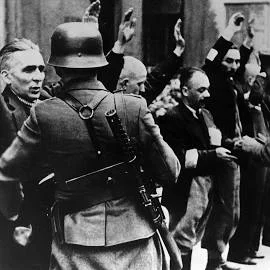 The aim of the invasion was to disestablish Poland as a sovereign country, with its citizens destined for extermination. German and Slovak forces invaded
The aim of the invasion was to disestablish Poland as a sovereign country, with its citizens destined for extermination. German and Slovak forces invaded -
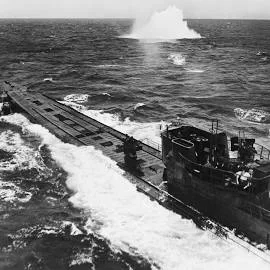 The Battle of the Atlantic pitted U-boats and other warships of the German Kriegsmarine (Navy) and aircraft of the Luftwaffe (Air Force) against the Royal Navy
The Battle of the Atlantic pitted U-boats and other warships of the German Kriegsmarine (Navy) and aircraft of the Luftwaffe (Air Force) against the Royal Navy -
 a policy established by the U.S. Neutrality Act of 1939 that allowed warring nations to purchase goods, including arms, from the United States
a policy established by the U.S. Neutrality Act of 1939 that allowed warring nations to purchase goods, including arms, from the United States -
 The British officially recognise the battle's duration as being from 10 July until 31 October 1940, which overlaps the period of large-scale night attacks
The British officially recognise the battle's duration as being from 10 July until 31 October 1940, which overlaps the period of large-scale night attacks -
 The destroyers-for-bases deal was an agreement between the United States and the United Kingdom on 2 September 1940
The destroyers-for-bases deal was an agreement between the United States and the United Kingdom on 2 September 1940 -
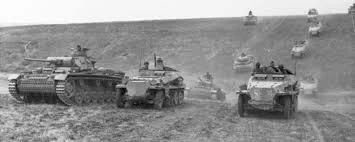 a World War II military tactic characterized by a swift, coordinated attack using mobile forces like tanks and motorized infantry, supported by close air support from the Luftwaffe
a World War II military tactic characterized by a swift, coordinated attack using mobile forces like tanks and motorized infantry, supported by close air support from the Luftwaffe -
 The term "Lend-Lease" most commonly refers to the Lend-Lease Act of 1941, a U.S. World War II program that provided military aid (like weapons, ships, and food) to Allied nations whose defense was vital to the U.S.
The term "Lend-Lease" most commonly refers to the Lend-Lease Act of 1941, a U.S. World War II program that provided military aid (like weapons, ships, and food) to Allied nations whose defense was vital to the U.S. -
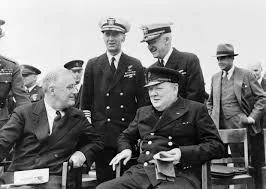 The Atlantic Charter was a joint statement by U.S. President Franklin D. Roosevelt and British Prime Minister Winston Churchill in August 1941, outlining their goals for the post-World War II world
The Atlantic Charter was a joint statement by U.S. President Franklin D. Roosevelt and British Prime Minister Winston Churchill in August 1941, outlining their goals for the post-World War II world -
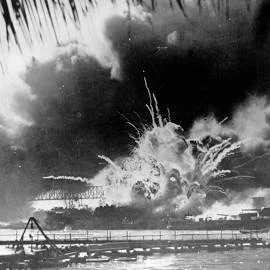 The Pearl Harbor National Memorial honors the lives affected by the December 7, 1941 attack, a pivotal moment in history. Museums and ground
The Pearl Harbor National Memorial honors the lives affected by the December 7, 1941 attack, a pivotal moment in history. Museums and ground -
 The Battle of the Coral Sea, from 4 to 8 May 1942, was a major naval battle between the Imperial Japanese Navy and naval and air forces of the United
The Battle of the Coral Sea, from 4 to 8 May 1942, was a major naval battle between the Imperial Japanese Navy and naval and air forces of the United -
 The Battle of Midway was a major naval battle in the Pacific Theater of World War II that took place on 4–7 June 1942
The Battle of Midway was a major naval battle in the Pacific Theater of World War II that took place on 4–7 June 1942 -
 a U.S. government agency created by President Franklin D. Roosevelt in January 1944 to rescue and provide relief to Jews and other victims of Nazi persecution
a U.S. government agency created by President Franklin D. Roosevelt in January 1944 to rescue and provide relief to Jews and other victims of Nazi persecution -
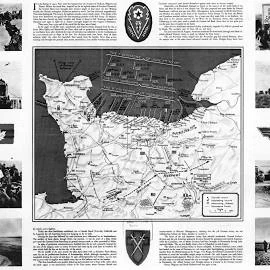 Operation Overlord was the codename for the Battle of Normandy, the Allied operation that launched the successful liberation of German-occupied Western Europe
Operation Overlord was the codename for the Battle of Normandy, the Allied operation that launched the successful liberation of German-occupied Western Europe -
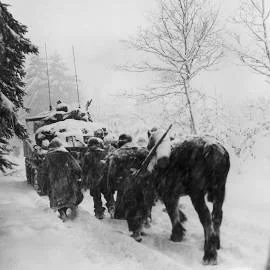 The Battle of the Bulge, also known as the Ardennes Offensive or Unternehmen Wacht am Rhein, was the last major German offensive campaign on the Western Front
The Battle of the Bulge, also known as the Ardennes Offensive or Unternehmen Wacht am Rhein, was the last major German offensive campaign on the Western Front -
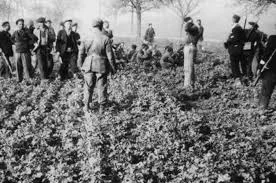 The camp gained notoriety when it was liberated by the United States Army in April 1945; Allied commander Dwight D. Eisenhower visited one of its subcamps
The camp gained notoriety when it was liberated by the United States Army in April 1945; Allied commander Dwight D. Eisenhower visited one of its subcamps -
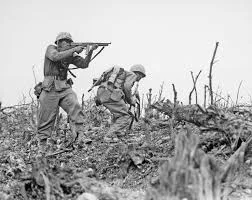 The 82-day battle on Okinawa lasted from 1 April 1945 until 22 June 1945. After a long campaign of island hopping, the Allies were planning to use Kadena Air
The 82-day battle on Okinawa lasted from 1 April 1945 until 22 June 1945. After a long campaign of island hopping, the Allies were planning to use Kadena Air -
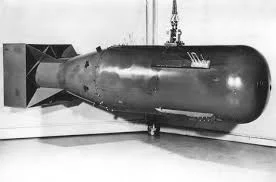 The design was highly inefficient: the weapon used on Hiroshima contained 64 kilograms (141 lb) of uranium, but less than a kilogram underwent nuclear fission.
The design was highly inefficient: the weapon used on Hiroshima contained 64 kilograms (141 lb) of uranium, but less than a kilogram underwent nuclear fission. -
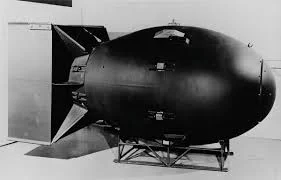 A Fat Man device was detonated over the Japanese city of Nagasaki on 9 August 1945. It was the second and larger of the only two nuclear weapons ever used
A Fat Man device was detonated over the Japanese city of Nagasaki on 9 August 1945. It was the second and larger of the only two nuclear weapons ever used -
 Victory over Japan Day (also known as V-J Day, Victory in the Pacific Day, or V-P Day) is the day on which Imperial Japan surrendered ; 15 August is the official
Victory over Japan Day (also known as V-J Day, Victory in the Pacific Day, or V-P Day) is the day on which Imperial Japan surrendered ; 15 August is the official -
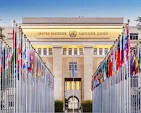 an intergovernmental organization established in 1945 with a mission to maintain international peace and security, develop friendly relations among states, promote international cooperation, and serve as a center for harmonizing the actions of nations
an intergovernmental organization established in 1945 with a mission to maintain international peace and security, develop friendly relations among states, promote international cooperation, and serve as a center for harmonizing the actions of nations -
 The Nuremberg trials were held by the Allies against leaders of the defeated Nazi Germany for plotting and carrying out invasions of other countries
The Nuremberg trials were held by the Allies against leaders of the defeated Nazi Germany for plotting and carrying out invasions of other countries -
 The Truman Doctrine was a U.S. foreign policy established in 1947 that committed the United States to supporting "free peoples" against communist aggression through military and economic aid. Announced by President Harry S
The Truman Doctrine was a U.S. foreign policy established in 1947 that committed the United States to supporting "free peoples" against communist aggression through military and economic aid. Announced by President Harry S -
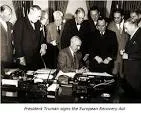 a U.S. initiative to provide foreign aid to Western European countries after World War II, totaling $13.3 billion between 1948 and 1951 to help rebuild their economies
a U.S. initiative to provide foreign aid to Western European countries after World War II, totaling $13.3 billion between 1948 and 1951 to help rebuild their economies -
 It sets out, for the first time, fundamental human rights to be universally protected and it has been translated into over 500 languages.
It sets out, for the first time, fundamental human rights to be universally protected and it has been translated into over 500 languages. -
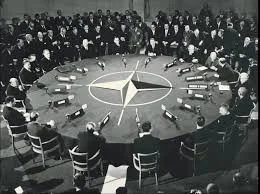 The North Atlantic Treaty Organization, also called the North Atlantic Alliance, is an intergovernmental military alliance between 32 member states—30 in Europe and 2 in North America. Founded in the aftermath of World War II, NATO was established with the signing of the North Atlantic Treaty in 1949.
The North Atlantic Treaty Organization, also called the North Atlantic Alliance, is an intergovernmental military alliance between 32 member states—30 in Europe and 2 in North America. Founded in the aftermath of World War II, NATO was established with the signing of the North Atlantic Treaty in 1949.